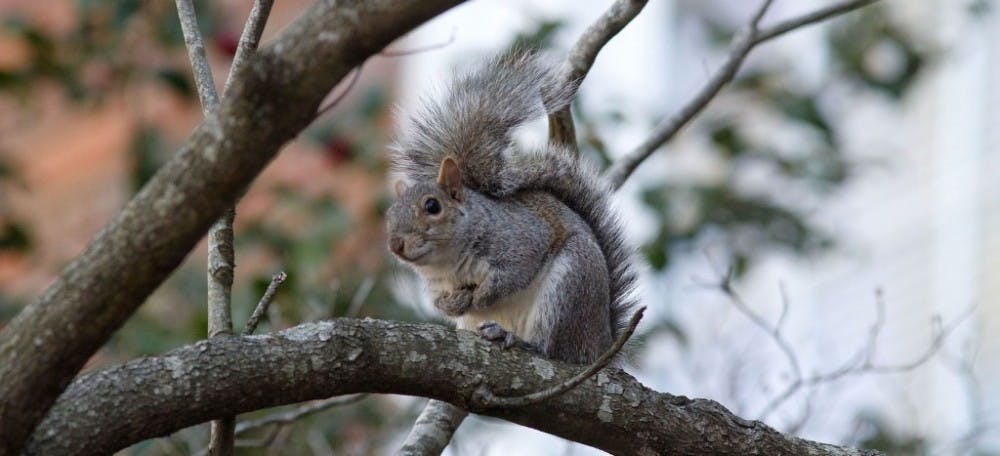The squirrel drowned in the toilet.
Near the end of winter break, Elon University sophomore Jessica Edwards received a text from her RA informing her of the situation. Her suitemate had entered their shared bathroom in Virginia residence hall upon returning to campus and found a sodden clump of gray fur floating lifelessly in the shallow water.
“How does that even happen?” Edwards asked. “It was the weirdest thing.”
The unfortunate creature was not alone in its efforts to explore inside one of Elon’s buildings. According to Tom Flood, director of landscaping and grounds, a recent explosion in Elon’s squirrel population generated an army of furry trespassers.
“We have continual building damage,” he said. “There is great desire for building a nesting site inside the buildings, and wood doesn’t slow them down at all. They nest in the walls, they nest between floors, and when they’re in the buildings, they like to chew on metal, and they like chewing on wiring.”
Squirrels have long given Elon’s groundskeepers gray hair, but this year, the Sciurus carolinensis has been exceptionally cunning. During the last several months, squirrels have infiltrated at least eight Elon buildings, including Johnston Hall and Virginia residence hall, according to Flood. They caused several roof leaks by chewing through the metal flashing surrounding rooftop pipes.
“This year has been particularly bad,” Flood said. “They have cost the university thousands of dollars in damages. We’re trying to pull those figures together. If you get one roof leak, that could be many thousands in damages.”
Innocuous as they may appear, squirrels are expertly equipped for breaking and entering. They scale Elon’s signature brick facades with their sharp claws and swiftly jump from treetops to rooftops in search of exposed pipes and vents. Squirrels can wriggle through openings as small as 1.5 inches in diameter, and they use their chisel-like teeth to enlarge cracks and holes.
Edwards said she and her suitemates speculated that their post-break surprise weaseled into the building though a rooftop pipe and somehow slipped into its watery grave.
Nick Jackson, operations manager at Animal Control Experts in Greensboro, said some squirrels consider the space between walls and floors “prime real estate.”
“There’s generally a space between the flooring and drywall or plaster, and when the animals enter the structure, these cubbies are similar to what they look for in the wild,” he said. “They see the structure as a hollowed out tree.”
Squirrels also vandalize their natural habitat by stripping trees of their bark, which disrupts the transportation of food and nutrients within the trunk.
“They actually chew the bark off the outside,” Flood said. “They chew through the exterior cambium, the external growing area. We had to remove six trees that were so damaged by squirrels, and we have another 30 on the list that we are watching closely.”
Jackson said squirrels occasionally eat bark as a dietary supplement when food is scarce.
“This time of year, we’re getting a lot of precipitation,” he said. “The ground becomes saturated, and all the buried acorns get wet. Some will germinate or rot. If it rots, it’s not good food for the squirrels, so they’ll supplement their diet by chewing on bark and other things.”
Squirrels reproduce twice yearly, once in the summer and once in the winter. The winter breeding period lasts from December to February, which may account for the increase in covert nest-building activity.
Elon’s groundskeepers hire professionals to safely relocate squirrels discovered in building recesses, but many return to rebuild their nests and birth squirrel pups within the warmth of insulated walls.
“We’ll seal up the building and restore it, and we try to trim the trees away from the building, but squirrels jump,” Flood said. “They’ll jump from a tree to a roof.”
But not all squirrels covet the gaps in Elon’s architecture.
“Squirrels have preferences just like we do,” Jackson said. “You have some squirrels who want to be in the house, then you get one that never wants to be inside. But the ones who want to be inside will come back after they’re relocated. That’s why it’s important to capture them and relocate them far away.”


